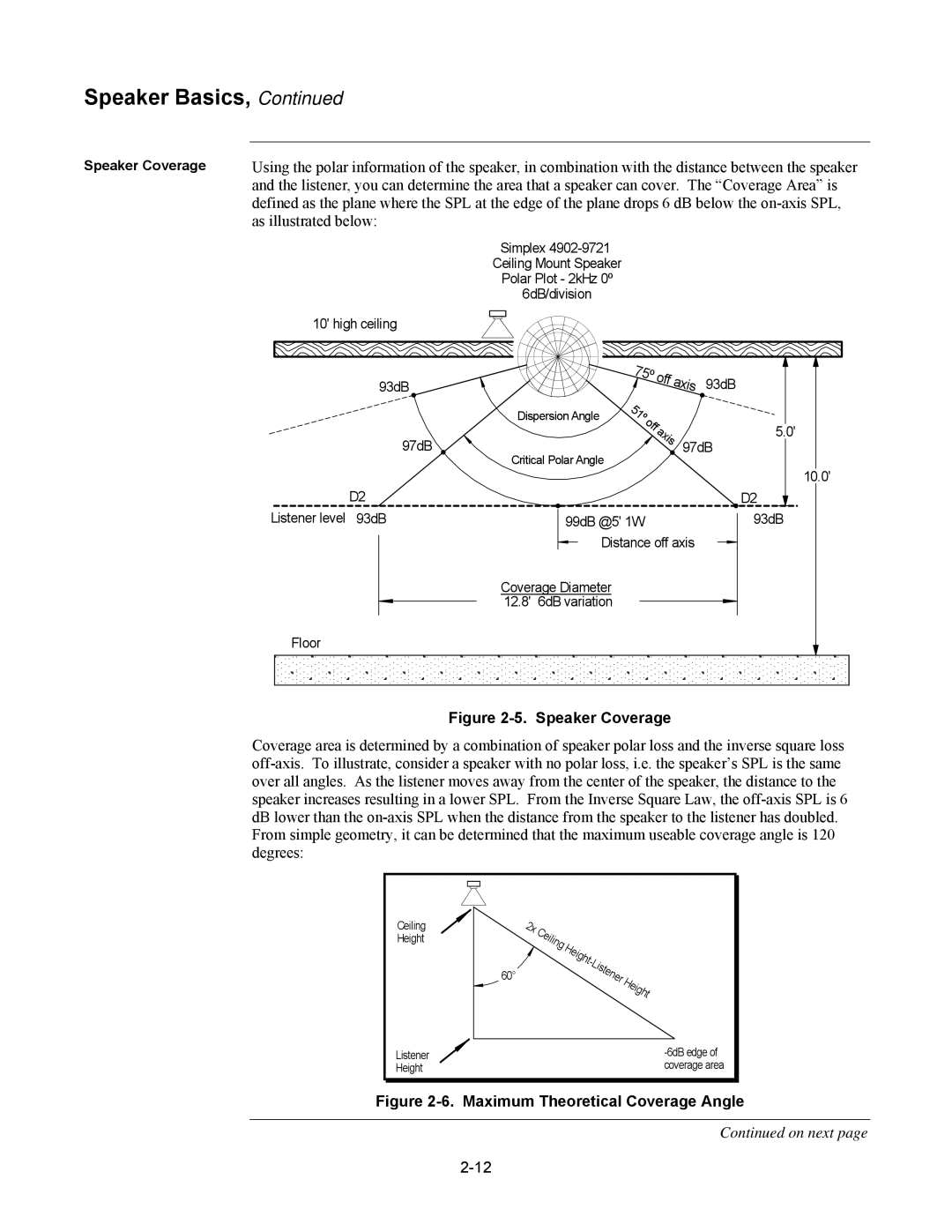
Speaker Basics, Continued
Speaker Coverage | Using the polar information of the speaker, in combination with the distance between the speaker |
| and the listener, you can determine the area that a speaker can cover. The “Coverage Area” is |
| defined as the plane where the SPL at the edge of the plane drops 6 dB below the |
| as illustrated below: |
| Simplex |
| Ceiling Mount Speaker |
| Polar Plot - 2kHz 0º |
| 6dB/division |
10' high ceiling |
|
|
| |
| 93dB |
|
| 93dB |
|
| Dispersion Angle | 51º |
|
|
|
| of |
|
|
|
| f | 5.0' |
|
|
| i | |
|
|
| x |
|
| 97dB |
| s | 97dB |
| Critical Polar Angle | |||
|
| 10.0' | ||
|
|
|
| |
| D2 |
|
| D2 |
Listener level | 93dB | 99dB @5' 1W | 93dB | |
|
|
| Distance off axis | |
Coverage Diameter
12.8' 6dB variation
Floor
Figure 2-5. Speaker Coverage
Coverage area is determined by a combination of speaker polar loss and the inverse square loss
Ceiling Height
60°
2 |
|
x | |
| C |
| ei |
| li |
| n |
| g |
| H |
| ei |
| g |
| h |
| t- |
| Li |
| st |
| e |
| n |
| e |
| r |
| H |
| ei |
| g |
| h |
| t |
Listener | |
Height | coverage area |
|
|
Figure 2-6. Maximum Theoretical Coverage Angle
Continued on next page
